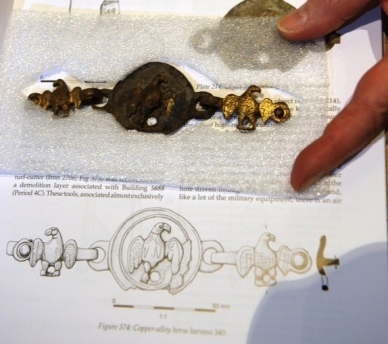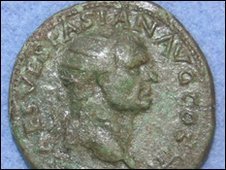Michelle Moran's Blog, page 86
May 3, 2010
Respect Your Elders, Human!
by Eliza Strickland
We Homo sapiens consider ourselves pretty special, with our symbolic art, abstract thinking, and highly organized societies. But evidence is mounting that these hallmarks of modern human behavior may have existed in earlier hominids.
In Spanish caves once occupied by Neanderthals, archaeologist João Zilhão of the University of Bristol unearthed punctured scallop shells crusted with mineral pigments: Neanderthal jewelry.Read the rest on Discover.
Humans Interbred with Neanderthals, Study Suggests
By Clara Moskowitz
Humans today could be part Neanderthal, according to a new study that found our ancestors interbred with an extinct hominid species some millennia ago.
Pictures: Ancient Egypt Crocodile Mummies Revealed
Rude Roman pots halt city revamp
WORK on the £11.6 million revamp of Canterbury's prestigious Beaney Institute has ground to a halt – because of Roman pornography. Archaeologists are racing against time to recover lost evidence beneath the city's streets before the builders return.
Read the rest on This is Kent.April 30, 2010
Carlisle dig's Roman finds
By Victoria Brenan
The secrets of a Roman dig in Carlisle said to be of "international importance" have finally been laid bare after more than 10 years.
 An illustration of a first century AD horse harness found during the dig, shown with the genuine article ...
An illustration of a first century AD horse harness found during the dig, shown with the genuine article ...
Henry VIII replica wine fountain unveiled
A wine fountain similar to those used by Henry VIII has been unveiled at Hampton Court Palace. The working replica was created after the remains of a 16th Century fountain were found during an archaeological dig at the London palace in 2008.
Read the rest on the BBC.Dinosaur Feathers Changed With Age
Charles Q. Choi
Newfound fossils of a feathered dinosaur suggest that the extinct reptiles might have possessed a diversity in plumage types that puts modern birds to shame. Farmers in northeastern China have unearthed two roughly 125-million-year-old specimens of the dinosaur Similicaudipteryx, a member of the group called the oviraptorosaurs, which are believed to be ancestors of birds.Read the rest on National Geographic.
April 28, 2010
Archaeologists baffled over 'bizarre' Viking discovery
By Gordon Deegan
A team of Irish archaeologists is puzzled by the "bizarre" discovery of a 1,150-year-old Viking necklace in a cave in the Burren. Besides being the largest by far – up to 12 times longer than previous finds – the team is puzzled by how such a "high-status" Viking treasure came to lie in the Burren, an area never settled by the Norsemen.Read the rest on the Irish Examiner.
Excavations near Reading show evidence of Boudicca
 Roman and Iron Age remains have been found at Silchester
Roman and Iron Age remains have been found at SilchesterEvidence found at the Roman site of Silchester could mean it was the site of one of Boudicca's battles. Professor Michael Fulford said that 13 years of excavations at Calleva had revealed evidence of the first gridded Iron Age town in Britain.
Read the rest on the BBC.Uncovering the Truth About Viking Men
ScienceDaily — Vikings are associated with weapons and warfare, machismo and mayhem. But many of them had the same concerns about choosing their children's names as we do, says a researcher from the University of Leicester who delivered his paper at a Viking conference on April 24.
Read the rest on Science Daily.



